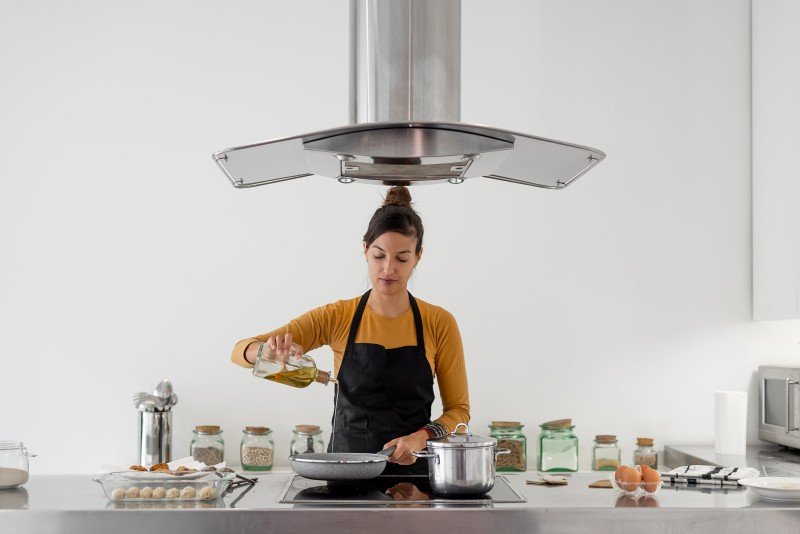The Most Successful Hob And Oven Gurus Can Do 3 Things
Understanding Hobs and Ovens: The Essential Kitchen Appliances
In the world of kitchen home appliances, couple of products are as vital as hobs and ovens. These devices form the backbone of cooking activities, making it possible for people to create everything from easy meals to elaborate banquets. Comprehending the distinctions, types, and functionalities of hobs and ovens can significantly improve one's cooking experience. This short article explores the intricacies of hobs and ovens, supplying insights that accommodate both amateur and experienced cooks.
What Is a Hob?
A hob, typically described as a cooktop or range top, is the flat surface area on which pots and pans are positioned for cooking. Hobs are equipped with heating elements that create the required heat for cooking food. They are available in numerous forms, including gas, electric, induction, and ceramic options. Each type provides unique advantages and disadvantages.
Types of Hobs
Gas Hobs:
- Heat Source: Natural gas or propane.
- Benefits: Instant heat control and responsiveness, chosen by numerous chefs for accurate cooking.
- Drawbacks: Requires a gas connection and can be less energy-efficient.
Electric Hobs:
- Heat Source: Electric coils or smooth glass-ceramic surfaces.
- Benefits: Generally simpler to clean, even heating, and commonly offered.
- Disadvantages: Slower to warm up and cool down compared to gas.
Induction Hobs:
- Heat Source: Electromagnetic currents.
- Advantages: Quick heating, energy-efficient, and just heats up the cookware, not the surrounding surface area.
- Downsides: Requires suitable cookware (ferrous materials).
Ceramic Hobs:
- Heat Source: Electric and has a smooth glass surface.
- Benefits: Sleek appearance, simple to tidy, and even heating.
- Drawbacks: Can take longer to warm up and cool down.
What Is an Oven?
An oven is an enclosed device that cooks food by surrounding it with dry heat. Ovens can be standalone units or integrated with hobs in a single device referred to as a range. Ovens are versatile tools that can be used for baking, roasting, broiling, and more.
Types of Ovens
Standard Ovens:
- Heat Source: Electric or gas.
- Benefits: Good for traditional baking and roasting.
- Drawbacks: Can have unequal heat circulation.
Convection Ovens:
- Heat Source: Electric or gas with a fan for circulating air.
- Benefits: More even cooking and faster cooking times due to airflow.
- Drawbacks: Can be pricier and might need modifications in cooking times.
Microwave Ovens:
- Heat Source: Microwaves.
- Advantages: Quick cooking and reheating; excellent for thawing.
- Disadvantages: Can not brown or crisp food well.
Steam Ovens:
- Heat Source: Steam generation.
- Benefits: Retains nutrients and moisture in food, healthier cooking option.
- Disadvantages: Longer cooking times and generally greater cost.
Key Differences Between Hobs and Ovens
While hobs and ovens serve the primary purpose of cooking food, their performances and utilizes vary substantially. The following table summarizes these key differences:
Feature
Hob
Oven
Cooking Method
Direct heat
Confined heat
Primary Use
Boiling, sautéing, frying
Baking, roasting
Heat Source
Gas, electric, induction
Gas, electric, steam
Cooking Area
Flat surface area
Enclosed space
Cooking Time
Generally much faster
Varies based on dish
Control & & Precision
Immediate and direct
Depend on settings and timers
Benefits of Using Hobs and Ovens Together
Combining using a hob and an oven can significantly boost the cooking process. Here are some advantages:
- Versatility: Different kinds of food can be prepared at the same time.
- Efficiency: Using both allows for different cooking methods, such as searing on the hob and baking in the oven.
- Time-Saving: Multi-tasking can considerably reduce general cooking time.
Maintenance and Care
To make sure the durability of hobs and ovens, regular upkeep is essential. Here are some ideas:
For Hobs:
- Clean spills instantly to avoid staining.
- Use appropriate cleaners for particular materials (e.g., ceramic cleaner for glass-ceramic hobs).
- Routinely inspect gas connections for leaks (for gas hobs).
For Ovens:
- Wipe down the interior after each use to prevent accumulation.
- Usage self-cleaning features if readily available, or apply oven cleaners for difficult stains.
- Frequently check seals and gaskets for wear and tear (to maintain heat efficiency).
Frequently asked questions About Hobs and Ovens
1. What is the best kind of hob for a newbie cook?
Response: A ceramic or electric hob is typically recommended for beginners due to reduce of use and cleansing.
2. Can I utilize any pots and pans on an induction hob?
Response: No, induction hobs require cookware made from magnetic products (e.g., cast iron or stainless steel).
3. How frequently should I clean my oven?
Response: It is recommended to clean your oven every couple of months, or more often if you use it frequently.
4. Is it much better to bake in a convection oven?
Response: Yes, convection ovens are typically much better for baking as they supply even heat circulation. Nevertheless, some delicate dishes might benefit from traditional ovens.
Comprehending the functionality and differences between hobs and ovens is necessary for any cooking lover. Whether Buy Ovens Uk chooses the immediate heat of a gas hob or the precision of an induction cooktop, each type provides special advantages. Similarly, ovens vary extensively in function, from standard baking to steam cooking. By appreciating these appliances' roles in food preparation, cooks can boost their cooking abilities and simplify their kitchen activities.
